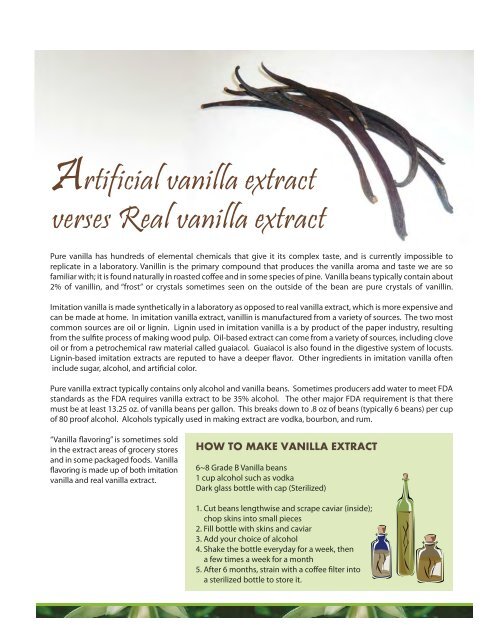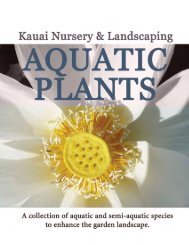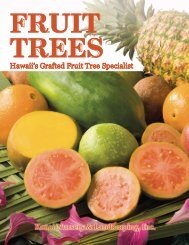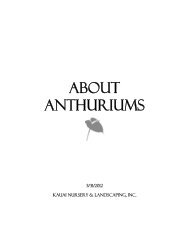Vanilla orchids - Kauai Nursery & Landscaping, Inc.
Vanilla orchids - Kauai Nursery & Landscaping, Inc.
Vanilla orchids - Kauai Nursery & Landscaping, Inc.
Create successful ePaper yourself
Turn your PDF publications into a flip-book with our unique Google optimized e-Paper software.
Artificial vanilla extract<br />
verses Real vanilla extract<br />
Pure vanilla has hundreds of elemental chemicals that give it its complex taste, and is currently impossible to<br />
replicate in a laboratory. Vanillin is the primary compound that produces the vanilla aroma and taste we are so<br />
familiar with; it is found naturally in roasted coffee and in some species of pine. <strong>Vanilla</strong> beans typically contain about<br />
2% of vanillin, and “frost” or crystals sometimes seen on the outside of the bean are pure crystals of vanillin.<br />
Imitation vanilla is made synthetically in a laboratory as opposed to real vanilla extract, which is more expensive and<br />
can be made at home. In imitation vanilla extract, vanillin is manufactured from a variety of sources. The two most<br />
common sources are oil or lignin. Lignin used in imitation vanilla is a by product of the paper industry, resulting<br />
from the sulfite process of making wood pulp. Oil-based extract can come from a variety of sources, including clove<br />
oil or from a petrochemical raw material called guaiacol. Guaiacol is also found in the digestive system of locusts.<br />
Lignin-based imitation extracts are reputed to have a deeper flavor. Other ingredients in imitation vanilla often<br />
include sugar, alcohol, and artificial color.<br />
Pure vanilla extract typically contains only alcohol and vanilla beans. Sometimes producers add water to meet FDA<br />
standards as the FDA requires vanilla extract to be 35% alcohol. The other major FDA requirement is that there<br />
must be at least 13.25 oz. of vanilla beans per gallon. This breaks down to .8 oz of beans (typically 6 beans) per cup<br />
of 80 proof alcohol. Alcohols typically used in making extract are vodka, bourbon, and rum.<br />
“<strong>Vanilla</strong> flavoring” is sometimes sold<br />
in the extract areas of grocery stores<br />
and in some packaged foods. <strong>Vanilla</strong><br />
flavoring is made up of both imitation<br />
vanilla and real vanilla extract.<br />
HOW TO MAKE VANILLA EXTRACT<br />
6~8 Grade B <strong>Vanilla</strong> beans<br />
1 cup alcohol such as vodka<br />
Dark glass bottle with cap (Sterilized)<br />
1. Cut beans lengthwise and scrape caviar (inside);<br />
chop skins into small pieces<br />
2. Fill bottle with skins and caviar<br />
3. Add your choice of alcohol<br />
4. Shake the bottle everyday for a week, then<br />
a few times a week for a month<br />
5. After 6 months, strain with a coffee filter into<br />
a sterilized bottle to store it.






